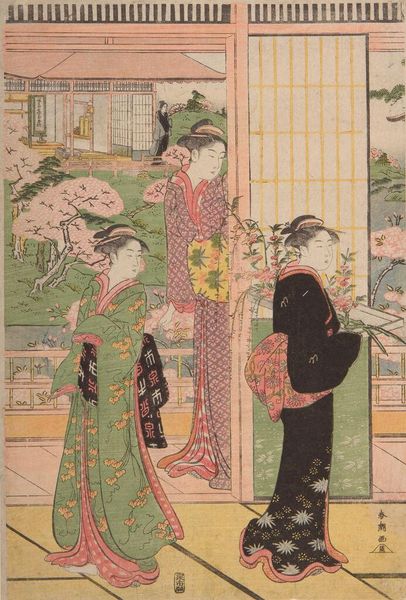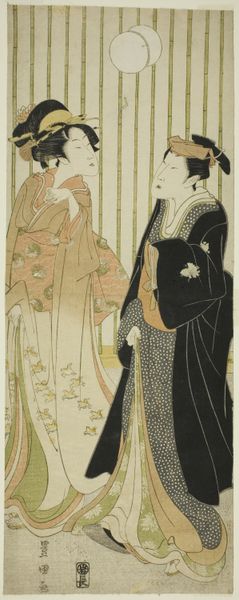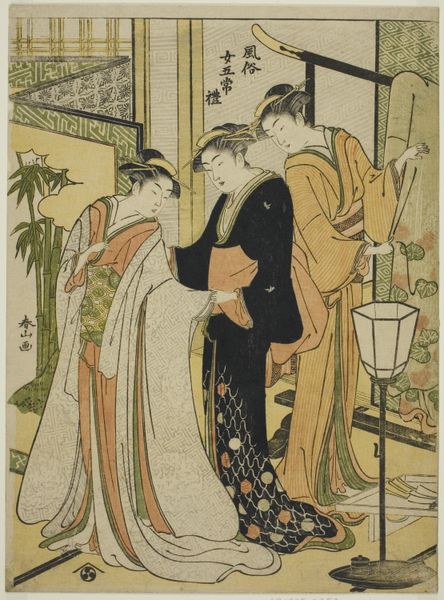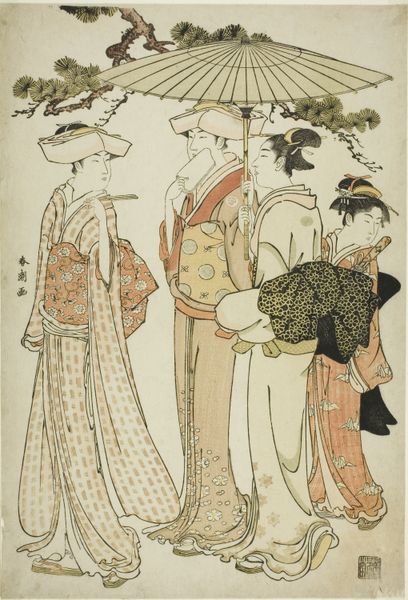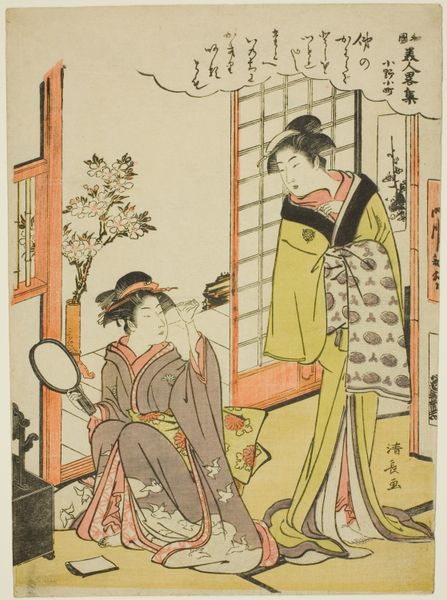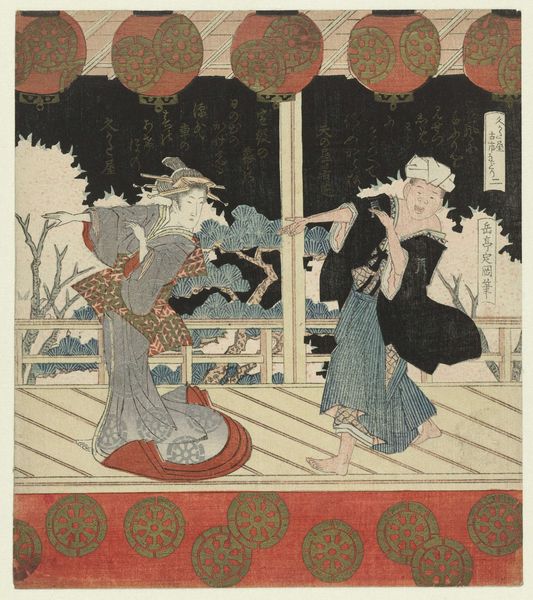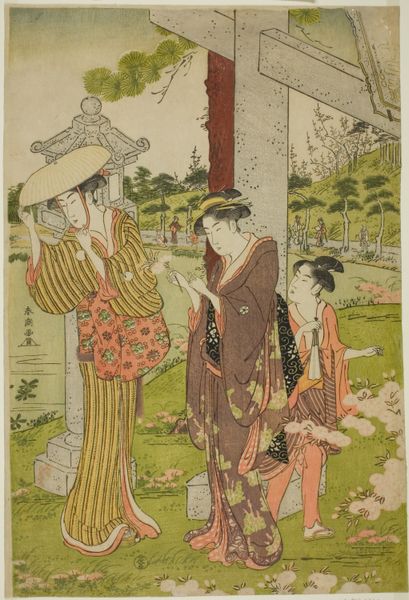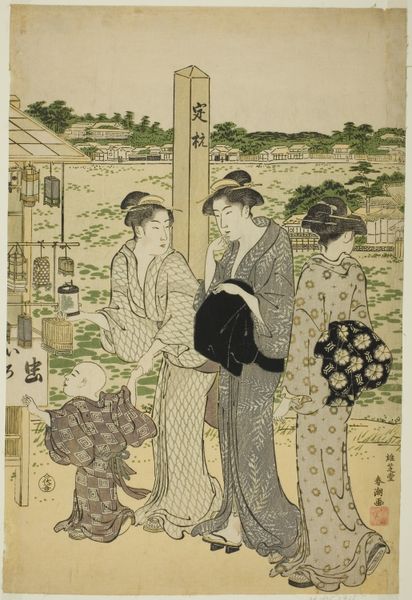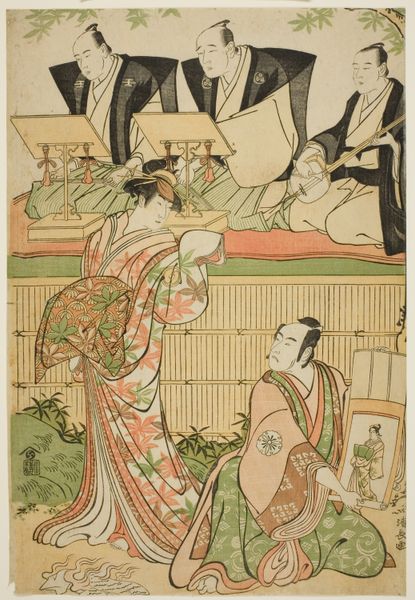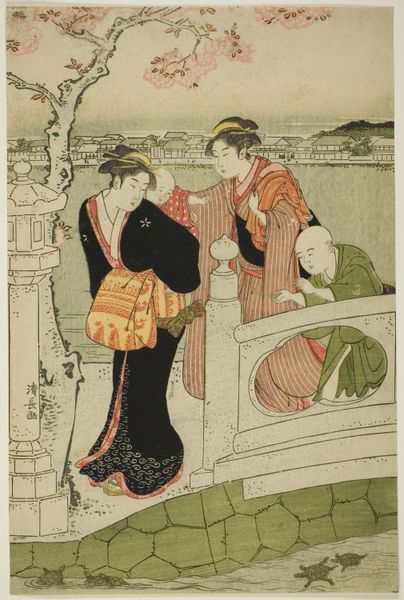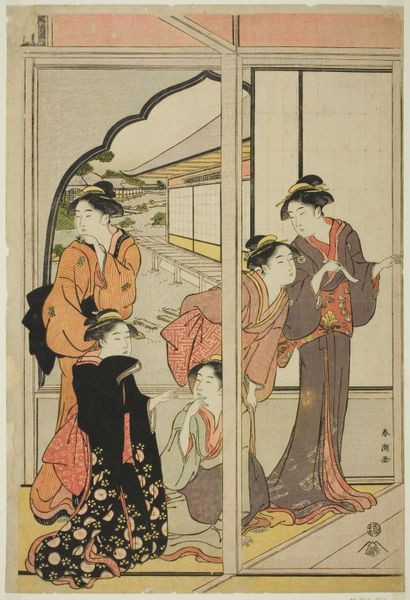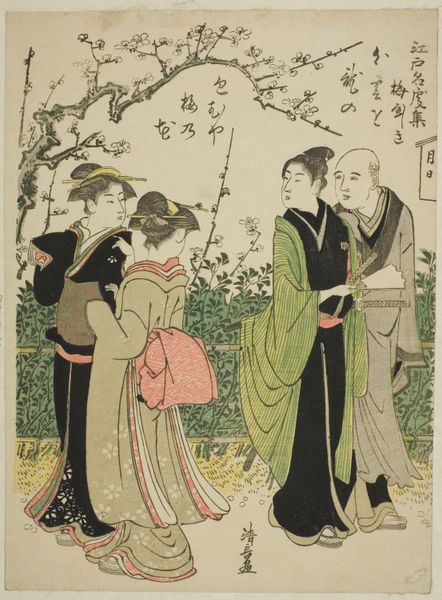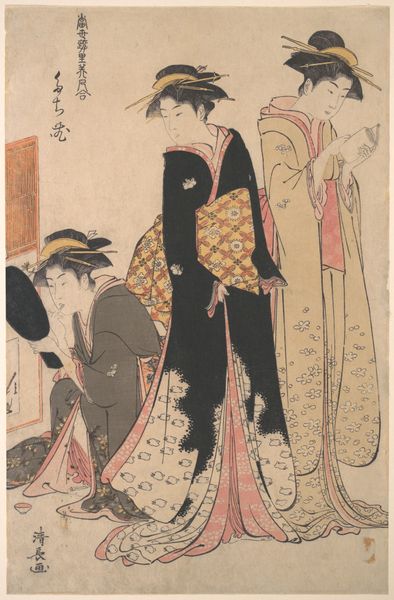
print, woodblock-print
#
portrait
# print
#
asian-art
#
ukiyo-e
#
figuration
#
woodblock-print
#
genre-painting
#
watercolor
Dimensions: 37.6 × 25.3 cm (14 13/16 × 9 15/16 in.)
Copyright: Public Domain
Curator: Today, we're looking at Katsukawa Shuncho's woodblock print, “Scene from the Play 'Imoseyama'”, which dates from the late 1780s. It's part of the Ukiyo-e tradition, now housed here at the Art Institute of Chicago. Editor: It strikes me immediately as a study in muted tones and subtle geometries. The artist uses distinct planes to separate interior and exterior spaces, and there's a beautiful interplay between the decorative patterns on the kimonos and the natural forms in the garden. Curator: Indeed, Shuncho was active during a period when printmaking served not just as artistic expression but also as social documentation. Ukiyo-e prints depicting popular actors in famous roles were extremely sought after by the burgeoning merchant class in Edo, now Tokyo. Editor: Notice how the artist employs the "key-block" method: the initial outline dictating every form is carved first. This structural framework then defines the chromatic fills—delicate, restrained, almost whispering the narrative instead of shouting it. Curator: These prints were far more than simple portraits; they served as advertising, as a record of theatrical performances and social status. Owning such a print conferred a certain cultural capital, signaling awareness of current trends and artistic tastes. The theatre itself became a mirror reflecting contemporary urban life and aspirations. Editor: And yet, beyond the documentarian aspect, I am arrested by the aesthetic intelligence evident in every contour. The placement of the figures, their elegant poise against the rectilinear framework, speaks to a keen compositional sensibility. Even the textural contrast between the polished floorboards and the organic foliage suggests a layered experience. Curator: Shuncho’s decision to represent a scene from “Imoseyama” also reflects the play's themes, exploring loyalty, sacrifice, and love during the turmoil of feudal Japan. Such prints popularized classical stories and moral narratives to a broad audience. Editor: Looking at the work now, I am again impressed by the technical virtuosity needed to align the various color blocks in order to achieve the finesse in the composition. It is an interesting blend of formalism, commercial intent, and powerful, subtly-presented emotion. Curator: Understanding these artworks requires examining both their internal construction and the external forces that shaped their creation and consumption. Thanks for helping uncover those layers. Editor: It was a pleasure to unravel these subtleties of line and tone. Each element reveals an intricate and sophisticated world, much like the best examples of art!
Comments
No comments
Be the first to comment and join the conversation on the ultimate creative platform.
